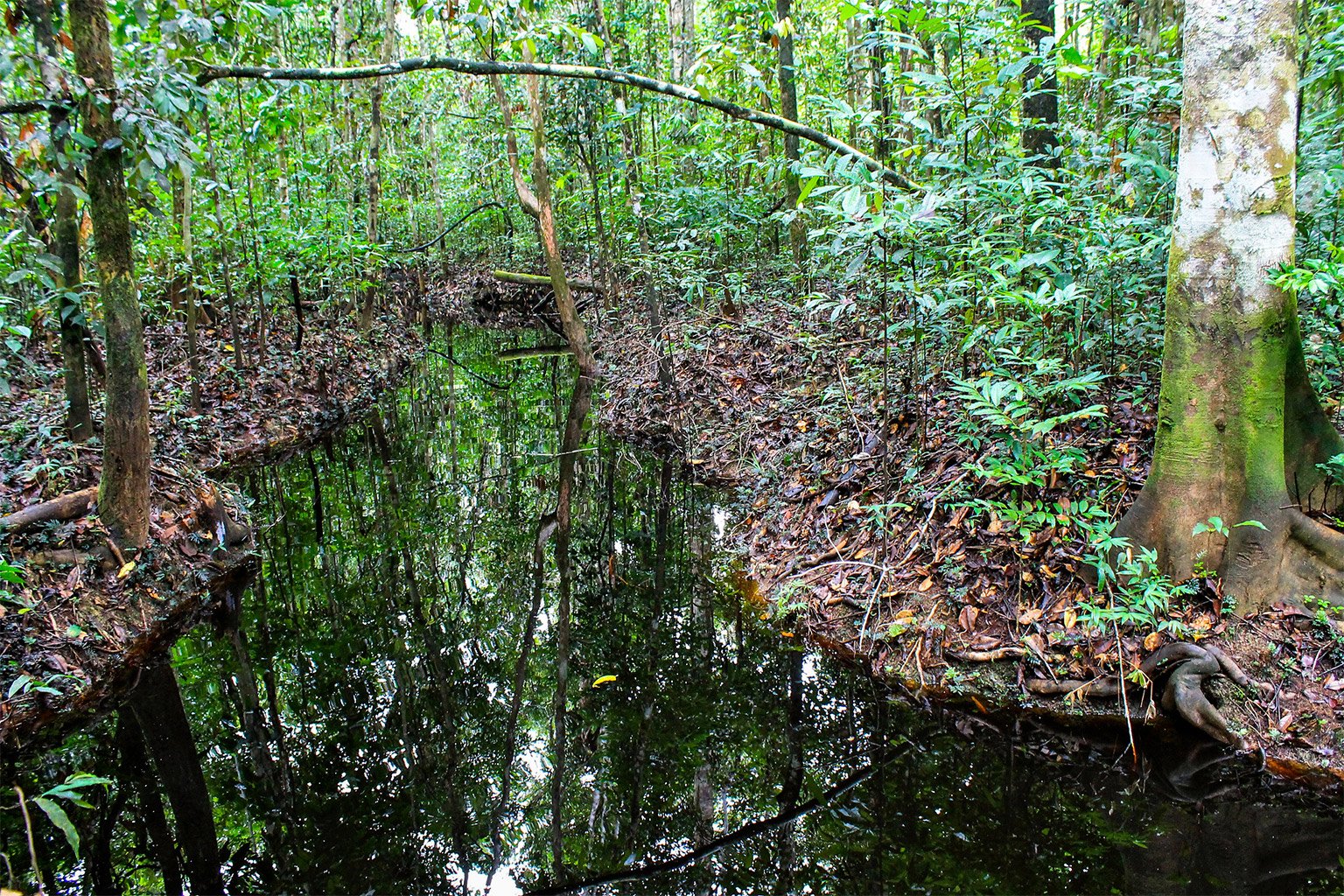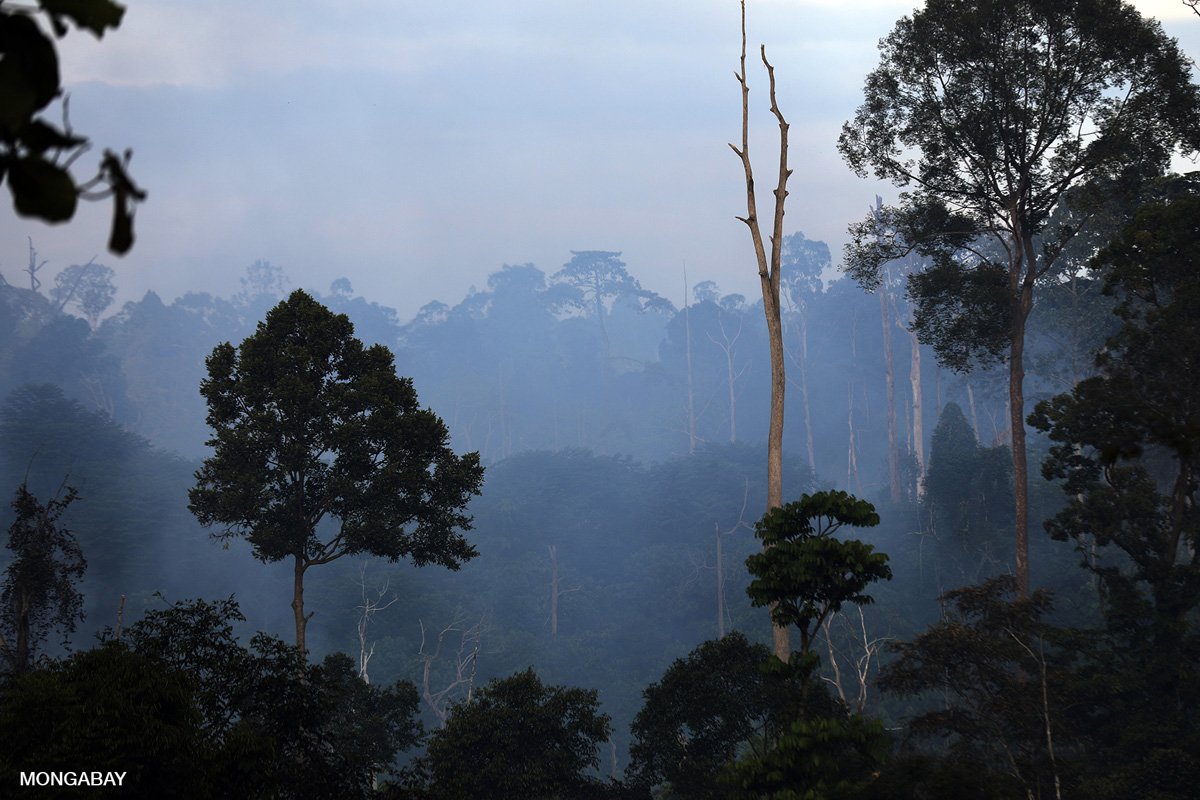- As the United Nations Biodiversity Conference begins, a group of researchers from more than a dozen countries are calling for worldwide peatland protection and restoration for the protection of species and because of the vast amounts of carbon they contain.
- In a signed statement released Dec. 1, more than 40 scientists note that peatlands contain twice as much carbon as is found in all the world’s forests.
- As long as peatlands remain waterlogged, that carbon will stay in the soil; but if they’re degraded or drained, as around 12% of the world’s peatlands have been, they quickly become a source of atmospheric carbon.
- The scientists are asking for a more prominent role in international negotiations to address climate change and species’ global loss.
A group of researchers from more than a dozen countries are calling for worldwide peatland protection and restoration.
In a signed statement released Dec. 1, more than 40 scientists say the global importance of peatlands must be addressed.
These swampy, waterlogged depressions haven’t yet figured into discussions around tackling the world’s most pressing environmental crises, they say. Part of the reason is their historical significance to humans, said Simon Lewis, a professor of global change science at University College London and the University of Leeds in the U.K.
“We’re up against hundreds of years of people seeing swampy areas and draining them,” Lewis said during a press call after the statement’s publication. “Now we’re trying to say to the world, these places are actually really important for both carbon and biodiversity and water regulation and protecting us from future climate impacts.”
Scientists say healthy peatlands are vital to the climate despite covering only around 3% of the world’s surface. The water that collects in peaty locations, ranging from the equator to the high latitudes, curtails the natural decomposition process in the compressed layers of plant matter that accumulate on the ground. Stalling that process locks away an enormous storehouse of carbon, keeping it out of the atmosphere where it could goad temperatures even higher. The world’s peatland soils hold an estimated 600 billion metric tons of carbon — double what’s found in all the world’s forests — and they continue to sponge up more every year, if they remain intact.
If humans drain or degrade peatlands, as they might do when building a road requires changing the flow of water, peatlands can switch quickly from a climate mitigation hedge to a source of atmospheric carbon that could contribute markedly to the overall temperature rise. Scientists estimate that at least 12% of peatlands have been drained or degraded in some way, often for agriculture, according to a recent assessment of global peatlands by the United Nations Environment Programme, and they’re currently the source of about 4% of all human-caused carbon emissions.
Researchers are advocating for international climate negotiations to consider the importance of maintaining undisturbed peatlands for carbon and biodiversity. Euridice Nora Honorio Coronado, a tropical ecologist at the University of St. Andrews in the U.K. who has studied a bank of peatlands in the Peruvian Amazon, said recent research has turned up plant and animal species new to science there.

Around the world, peatlands harbor species that live in few other places. In Canada, the world’s second-largest peatlands (after those found in Siberia) provide a critical stopover for migratory birds, and they support mammals such as caribou and wolverines. But peatlands aren’t a significant part of the framework to preserve biodiversity that will be considered at the U.N. Biodiversity Conference (COP15) beginning Dec. 7, said Lorna Harris, an ecosystem scientist and program lead for forests peatlands and climate change at the Wildlife Conservation Society Canada.
“Their value for climate … and biodiversity has been overlooked and undervalued for many, many years,” Harris said during the press call.
COP15 begins on Dec. 7 in Montreal, which may help draw attention to the issue because Canada has one-quarter of the world’s peatlands, she said. Harris said they’re in good condition for now, in part because they’re in some of the remotest parts of the country. But some 5,000 square kilometers (about 1,900 square miles) of mining claims exist in Canada’s “Ring of Fire” region. The deep, ancient peatlands in this area overlap with deposits of nickel, copper and other minerals necessary to manufacture batteries, especially for electric cars, to aid the transition away from fossil fuels.
Disturbing the carbon in these peatlands could negate the benefit of having fewer gasoline- and diesel-powered vehicles on the road, leading to the release of the equivalent of 1.6 billion metric tons of CO2, Harris said. That’s about twice Canada’s total annual greenhouse gas emissions.
“We certainly do need to do the math to figure out if the extraction of the minerals from that region and the loss of the peatland carbon that would result is going to balance out at the end of the day,” she added.

Across the planet, in a very different climate, the swamp forests of the Congo Basin are also an important bulwark against further climate change, Lewis said. He led a team that, in 2017, published the first maps of these peatlands, the largest in the tropics. They’re home to unique and threatened species like lowland gorillas and forest elephants, and their deep soils are packed with carbon — about 29 billion metric tons, or about the same amount that the world emits from burning fossil fuel every year.
But, “There are a huge cluster of threats surrounding these peatlands,” Lewis said.
The governments of the Republic of Congo and the Democratic Republic of Congo (DRC) have designated timber and agricultural concessions that overlap with large areas of the Congo Basin peatlands. And some companies have estimated that massive oil deposits may lie beneath these verdant bogs.
In mid-2022, the DRC announced it would auction off the rights to explore for oil across more than 10,000 km2 (3,900 mi2) of peatlands. Leaders in the DRC say the income from oil could grow its struggling economy.
Currently, some investors are looking at obtaining the rights to the DRC’s peatland oil concessions and earning money from biodiversity and carbon credits, Lewis said. That approach could provide an alternative to the potentially destructive infrastructure development necessary to drill for oil.

Lewis also said that if oil extraction did occur, the people who live near the peatlands might not benefit from any influx of cash. Currently, the peatlands provide these communities with wood, medicines and food.
“They are essentially giant fish farms,” Lewis said, providing food and income to the people who harvest, dry, eat and sell them.
As things stand, the Congo Basin peatlands show few signs of degradation. Despite centuries of use, “Local people are utilizing them pretty sustainably,” Lewis said.
Similarly, deforestation in the Amazonian peatlands is low, Honorio said in the press call, pointing to the importance of Indigenous and local communities in their protection.
“It’s not that their livelihoods that are damaging them,” she said. Like their counterparts in the Congo Basin, the peatlands of the Peruvian Amazon also face potential development for agriculture, and an oil pipeline currently crosses the region where they’re found.
Honorio said she’s been working with Peru’s environment minister to incorporate the conservation of the peatlands into the country’s nationally determined contributions, or NDCs. A country’s NDC is its plan, under the 2015 Paris climate agreement, to reduce its emissions and adapt to the effects of climate change. Honorio is also working toward the inclusion of the Indigenous knowledge that has helped maintain the peatlands in these plans.
The quest to protect peatlands now sits at “an inflection point” for biodiversity loss and especially climate change, said Daniel Zarin, executive director of forests and climate change at the Wildlife Conservation Society.
“If we can’t find our way to really protecting 2 to 3% of the Earth’s land surface and in pursuit of mitigating the climate crisis,” he said, “then we’re in deep trouble indeed.”
Banner image: Participatory action research to community-based fire prevention and peatland restoration in Indonesia. Image by Aris Sanjaya/CIFOR via Flickr (CC BY-NC-ND 2.0).
John Cannon is a staff features writer with Mongabay. Find him on Twitter: @johnccannon
Related reading:
In Congo, a carbon sink like no other risks being carved up for oil
FEEDBACK: Use this form to send a message to the author of this post. If you want to post a public comment, you can do that at the bottom of the page.











